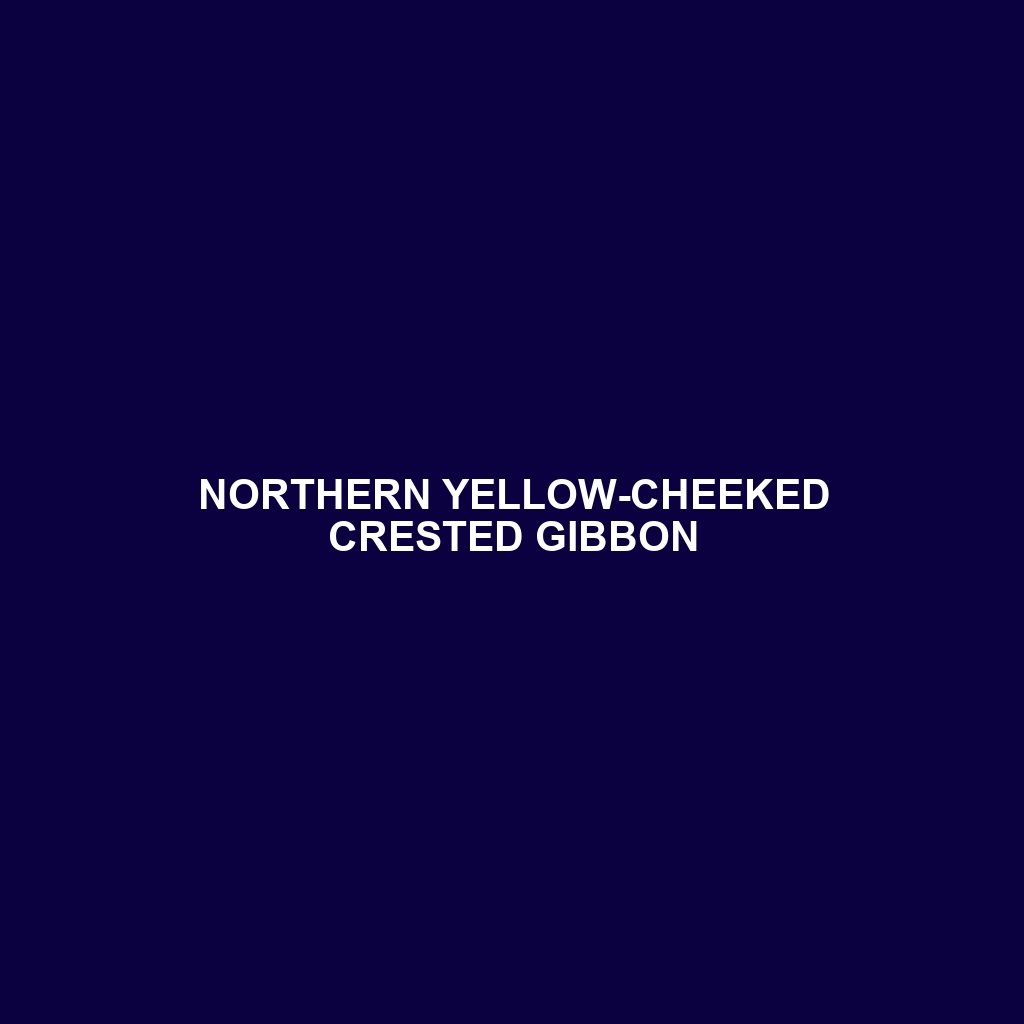Northern Yellow-cheeked Crested Gibbon (Nomascus annamensis)
:
The Northern Yellow-cheeked Crested Gibbon, scientifically known as Nomascus annamensis, is a striking and enchanting primate renowned for its distinctive coloration and melodious calls. Found predominantly in the dense forests of Southeast Asia, these gibbons are arboreal acrobats with a captivating presence and crucial ecological roles in their habitats.
Physical Characteristics:
Size: These gibbons are medium-sized primates. Males typically weigh between 6-8 kg (13-17 lbs), whereas females are slightly lighter, averaging around 5-7 kg (11-15 lbs).
Coloration: Male Northern Yellow-cheeked Crested Gibbons are characterized by their jet-black fur with vividly yellow cheeks and a prominent crest atop their heads. Females, on the other hand, exhibit a golden-yellow to light tan coloration with a less pronounced crest.
Special Features: Their long arms, which can span up to 1.5 meters (5 feet), are adapted for brachiation—swinging from tree to tree. They have a small, lightweight body, a round face, and expressive eyes that enhance their arboreal lifestyle.
Behaviors:
Social Interactions: These gibbons are highly social animals living in small, monogamous family units typically consisting of a male, female, and their offspring. They are known for their strong pair bonds and intricate family dynamics.
Feeding Habits: Their diet primarily consists of fruits, leaves, flowers, and occasionally insects. They play a pivotal role in seed dispersal, thereby aiding forest regeneration.
Ecological Roles: As frugivores, they help maintain the health and diversity of their forest ecosystems by dispersing seeds far and wide. Their presence is an indicator of a thriving, balanced forest environment.
Habitats:
Range: The Northern Yellow-cheeked Crested Gibbon inhabits the dense tropical and subtropical forests of Cambodia, Laos, and Vietnam.
Environment: They prefer primary evergreen and semi-evergreen forests at elevations ranging from lowland areas to mountainous regions up to 1,500 meters (4,900 feet) above sea level. These forests provide the canopy cover essential for their arboreal lifestyle.
Adaptations:
Physical Adaptations: Their elongated arms and hook-like hands are perfectly designed for brachiation, allowing them to move swiftly and efficiently among the treetops.
Behavioral Adaptations: Highly territorial, these gibbons use complex vocalizations to communicate with family members and ward off rivals. Their morning duets are not only a means of bonding but also a crucial aspect of territory establishment.
Conservation Status:
Threats: Habitat loss due to deforestation, illegal hunting, and the pet trade are significant threats to their survival.
Status: The Northern Yellow-cheeked Crested Gibbon is listed as Endangered on the IUCN Red List, highlighting the urgent need for conservation efforts.
Fun Facts:
Vocal Orchestra: Their complex and melodic calls can be heard over long distances and are a hallmark of their early morning routines.
Color Change: Juvenile gibbons are born with a golden-yellow coat which darkens to black as they mature. Males retain the black fur while females revert to a lighter color.
Family Life: Gibbons form lifelong bonds and exhibit strong familial care, with parents actively involved in nurturing and protecting their young.
By understanding and appreciating the Northern Yellow-cheeked Crested Gibbon, we can better advocate for the conservation of these remarkable primates and their vital habitats.
